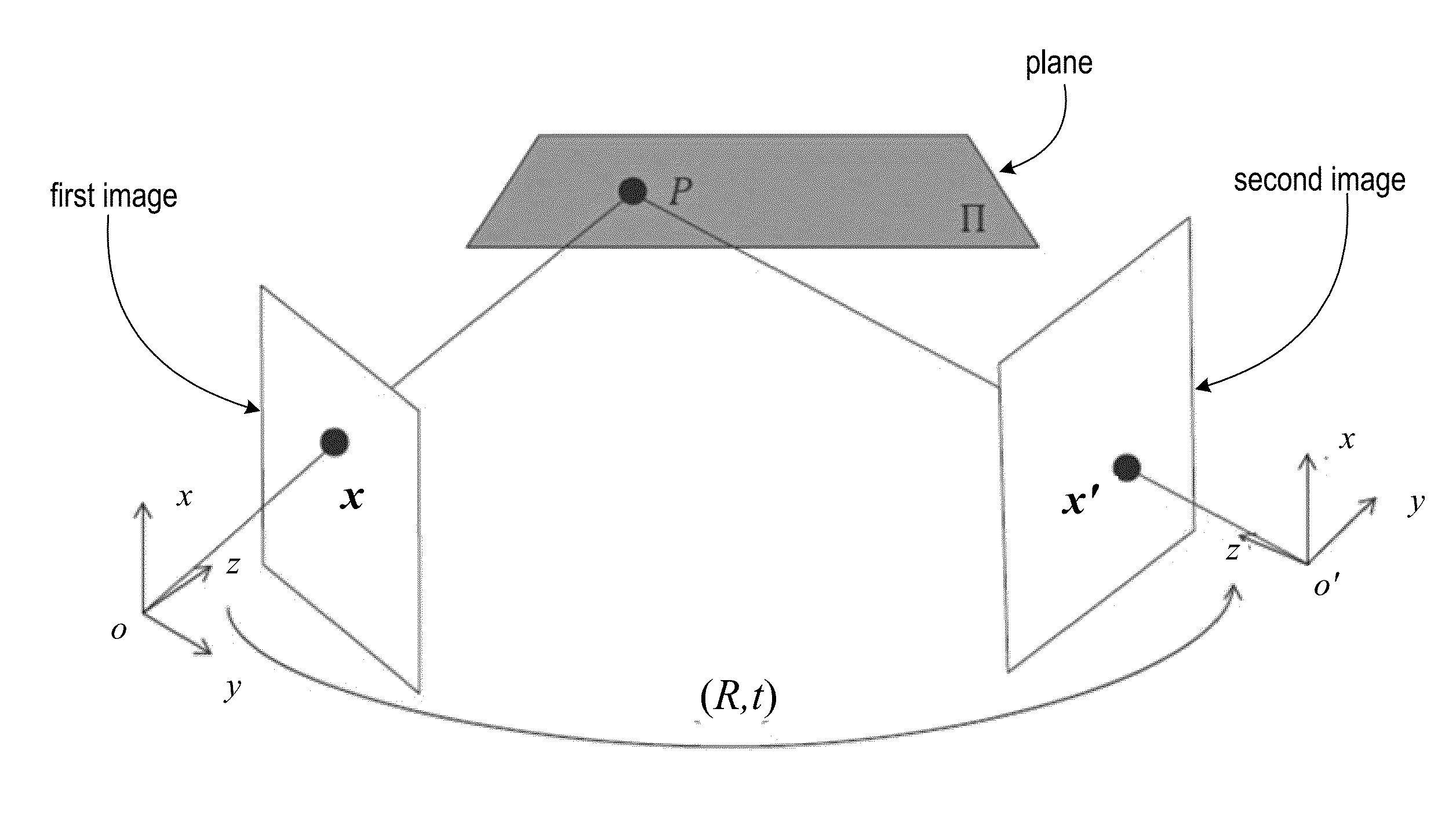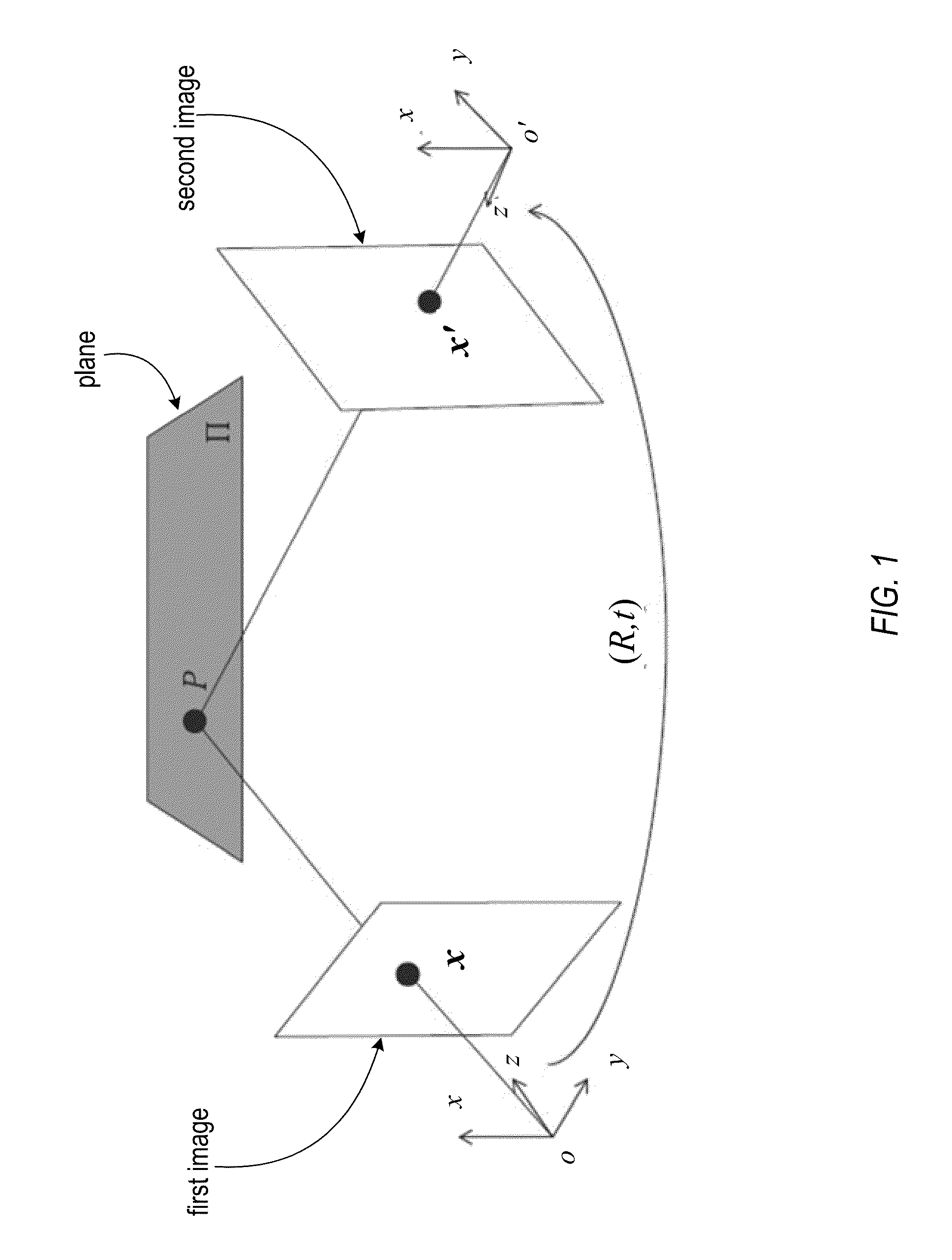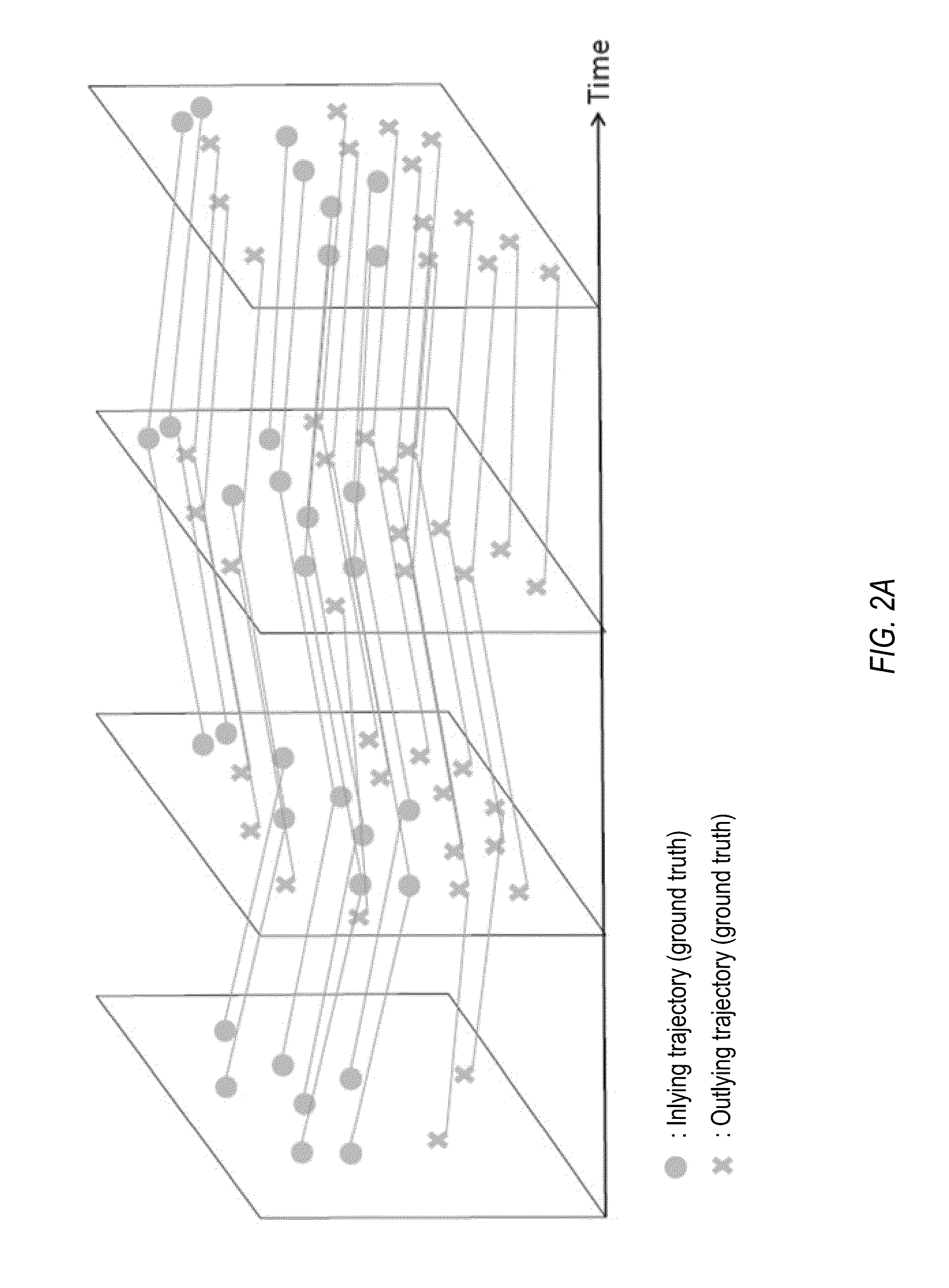Plane-based Self-Calibration for Structure from Motion
a self-calibration and motion technology, applied in the field of plane-based self-calibration for structure from motion, can solve problems such as breakag
- Summary
- Abstract
- Description
- Claims
- Application Information
AI Technical Summary
Benefits of technology
Problems solved by technology
Method used
Image
Examples
example implementations
[0200]Some embodiments may include a means for generating a set of inter-image homographies from a set of point trajectories according to a plane detection and tracking technique, and / or for generating structure and motion for a set of images or frames based on a set of received homographies according to plane-based self-calibration technique. For example, a plane detection and tracking module may receive input specifying a set of point trajectories and generate as output a set of homographies as described herein, and a plane-based self-calibration module may receive as input a set of homographies and generate as output structure and motion for a set of images or frames as described herein. In some embodiments, a single module may incorporate both the plane detection and tracking technique and the plane-based self-calibration technique as described herein to take as input a set of trajectories and provide as output structure and motion for a set of images or frames. These modules ma...
PUM
 Login to View More
Login to View More Abstract
Description
Claims
Application Information
 Login to View More
Login to View More - R&D
- Intellectual Property
- Life Sciences
- Materials
- Tech Scout
- Unparalleled Data Quality
- Higher Quality Content
- 60% Fewer Hallucinations
Browse by: Latest US Patents, China's latest patents, Technical Efficacy Thesaurus, Application Domain, Technology Topic, Popular Technical Reports.
© 2025 PatSnap. All rights reserved.Legal|Privacy policy|Modern Slavery Act Transparency Statement|Sitemap|About US| Contact US: help@patsnap.com



